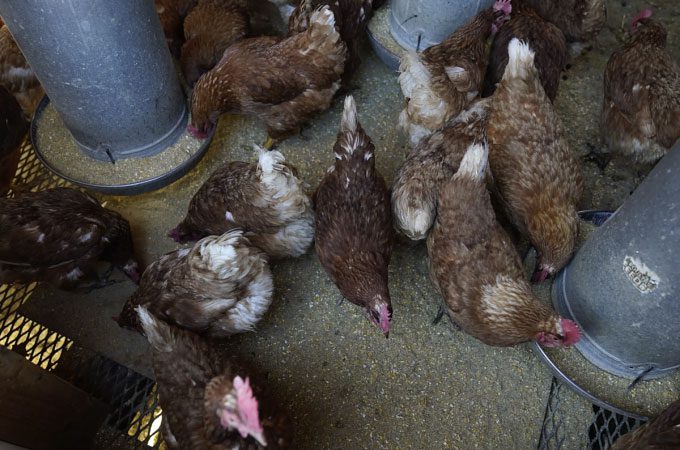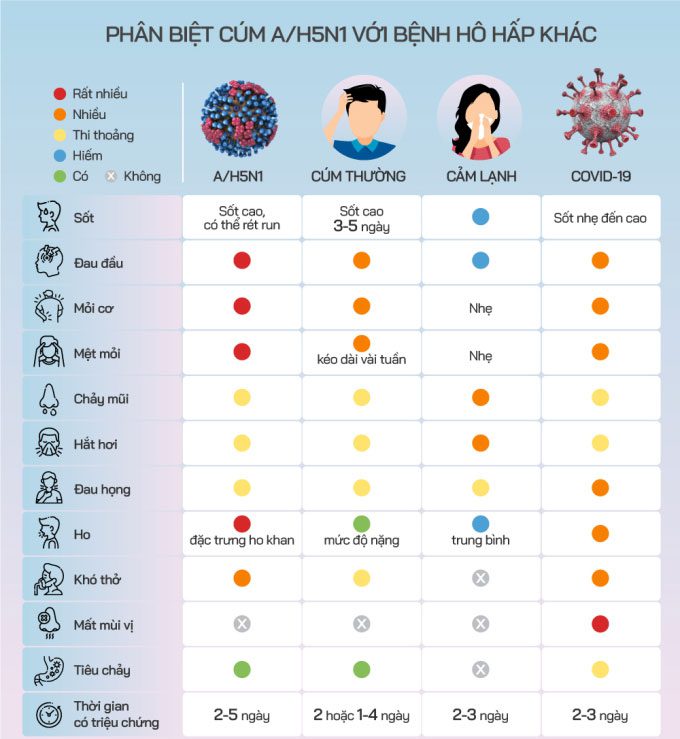The H5N1 virus typically exists in poultry or wild birds and can spread to humans who come into close contact, with a mortality rate of 60%.
Avian influenza is an infectious disease in bird species caused by type A influenza viruses. This disease was first identified in Italy over 100 years ago and has spread globally. The avian influenza virus primarily resides in migratory birds and aquatic wild birds and can infect poultry as well as other animal species.
The avian influenza virus is divided into two types: low pathogenic avian influenza (LPAI) and high pathogenic avian influenza (HPAI). Low pathogenic avian influenza does not cause symptoms or only causes mild symptoms in chickens, such as ruffled feathers and reduced egg production. High pathogenic viruses lead to severe illness and high mortality rates in infected poultry.
One of the common strains of avian influenza is H5N1, with a mortality rate of approximately 60%.

A flock of chickens at the Wagner farm in Glenview, Illinois, USA, on January 23. (Photo: AP).
H5N1 is usually not transmitted from animals to humans. However, sporadic outbreaks have been recorded worldwide. Since December 2003, 11 countries, including Vietnam, have reported outbreaks of high pathogenic H5N1 in poultry. During this outbreak, approximately 150 million poultry died or were destroyed. The World Health Organization (WHO) has also reported 117 cases of H5N1 infection in humans across four countries: Vietnam, Thailand, Indonesia, and Cambodia, with 60 patients having died.
According to the U.S. Centers for Disease Control and Prevention (CDC), infected birds shed the virus through saliva, mucus, and feces. The virus can exist in aerosol or dust and then enter the eyes, nose, or mouth of humans. H5N1 can also be transmitted when a person touches a surface contaminated with the virus and then touches their eyes, nose, or mouth.
Most infections occur when humans have prolonged close contact with infected poultry without wearing gloves or protective masks. Generally, the risk of infection depends on the extent of exposure, specifically the distance and duration of contact.
The possibility of human-to-human transmission of the virus is very low. In 2004, some Thai scientists reported evidence of H5N1 transmission from person to person within a family. Family members had close, prolonged contact with an infected child.
By 2005, Indonesia reported three clusters of H5N1 infections. Authorities stated that they “do not rule out the possibility” of limited, unsustainable human-to-human transmission.
In December 2007, China hypothesized that H5N1 was transmitted between a man and his father due to prolonged contact.
Nevertheless, WHO and global health organizations have not officially confirmed the possibility of H5N1 transmission from person to person.
Symptoms of H5N1 Infection
Avian influenza (H5N1) is diagnosed based on the following criteria:
Epidemiological history: Previous contact with a patient suffering from avian influenza, infected poultry, or being in an area where avian influenza is circulating within the last 7 days.
Clinical manifestations: The disease progresses acutely and may have the following symptoms:
- Fever above 38 degrees Celsius, may be accompanied by chills.
- Cough, usually dry, chest pain, less frequently upper respiratory tract symptoms…
- Shortness of breath, rapid breathing, cyanosis.
- On lung auscultation, there may be crackles, wheezing, rapid heartbeat, and sometimes shock.
- Other symptoms: Headache, muscle pain, diarrhea, altered consciousness, multi-organ failure.
- X-ray: Diffuse infiltrative lesions on one or both sides, rapidly progressing.
- Blood count examination: Normal or decreased white blood cell count.
According to WHO, patients need to be treated promptly in hospitals, with some requiring intensive care. Doctors may prescribe the antiviral medication oseltamivir to help reduce severity and prevent death.

Differentiating symptoms of Avian Influenza from regular flu, cold, Covid. (Photo: Tiến Thành)
To prevent infection, the CDC recommends that people avoid direct contact with wild birds, observing from a distance, as they may be infected with the virus even without symptoms. The agency also warns against contact with dead or sickly-looking poultry, exhibiting signs such as ruffled feathers and reduced egg production.
Individuals who come into contact with poultry or wild birds as part of their work should be aware of the risk of disease and take appropriate preventive measures. Groups at higher risk of virus exposure include workers at bird rehabilitation centers, staff at bird and animal sanctuaries, and responders to avian influenza outbreaks.
When handling sick poultry, the CDC recommends using protective equipment such as gloves, N95 masks if available, or well-fitting masks, and eye protection. People should avoid touching their mouth, nose, or eyes after contact with birds or surfaces that may be contaminated with saliva, mucus, or bird feces. After handling, individuals need to wash their hands with disinfectant soap and change clothes.
Currently, there is no vaccine to prevent H5N1 influenza. However, scientists are in the process of developing several potential candidates.


















































